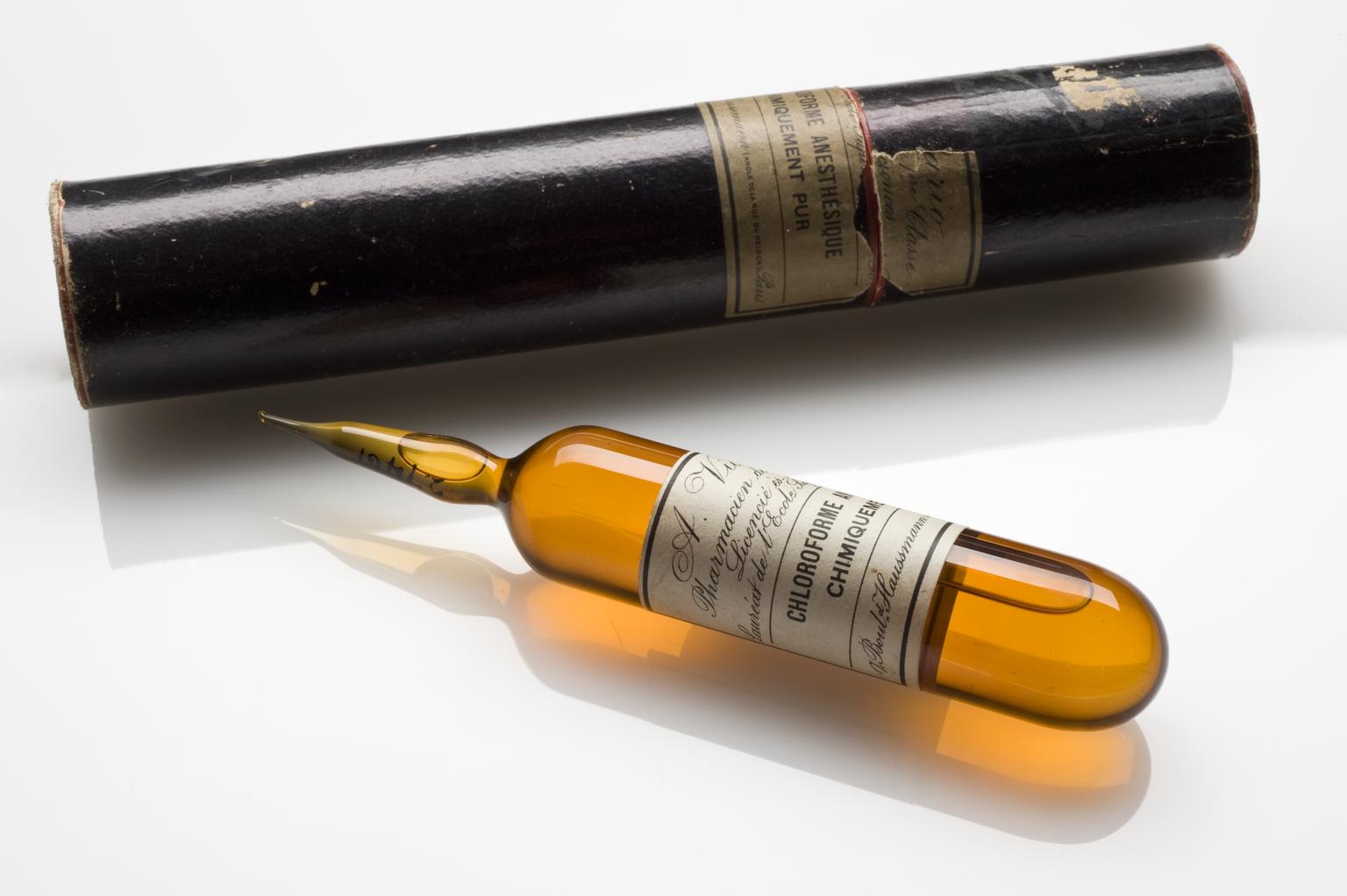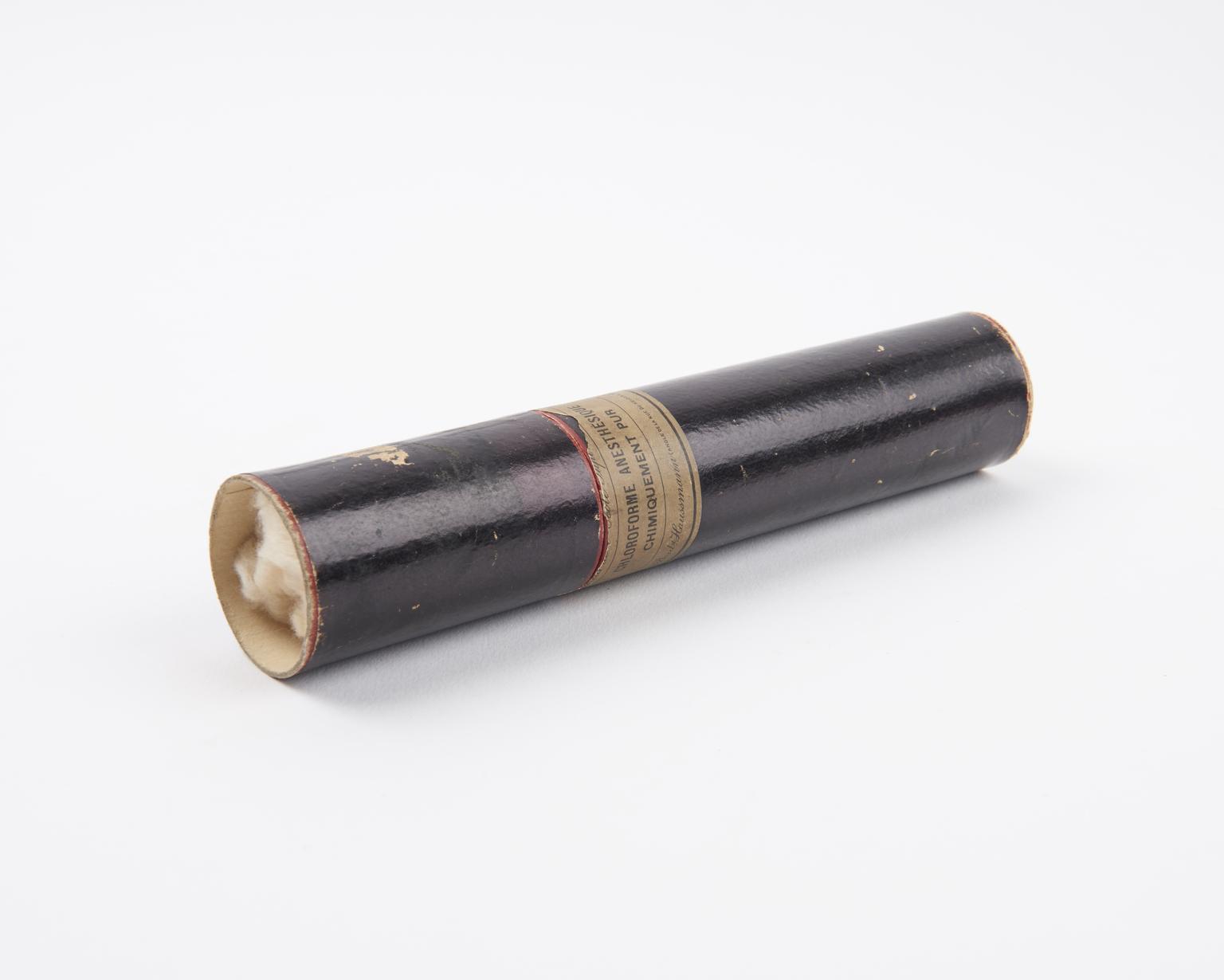
Glass ampoule of liquid chloroform
Brown glass ampoule of chloroform, made by A Vicario, Paris, France, 1854-1945
More
Chloroform was used as an anaesthetic from the late 1840s until the 1950s. Liquid chloroform was dropped on to a face mask or vaporised and inhaled by the patient through a face mask. The chloroform was prepared by a Parisian pharmacist, A Vicario. Once the potentially toxic nature of this anaesthetic had become apparent, it was used far more cautiously.
The vial was owned by Sir James Cantlie (1851-1926), a surgeon and medical administrator whose prestigious career included a leading role in setting up the London School of Tropical Medicine and the provision and training of ambulance services during the First World War.
- Materials:
- ampoule, glass , ampoule, paper, label and box, paper
- Object Number:
- A56873/1
- type:
- ampoule
- Image ©
- The Board of Trustees of the Science Museum







